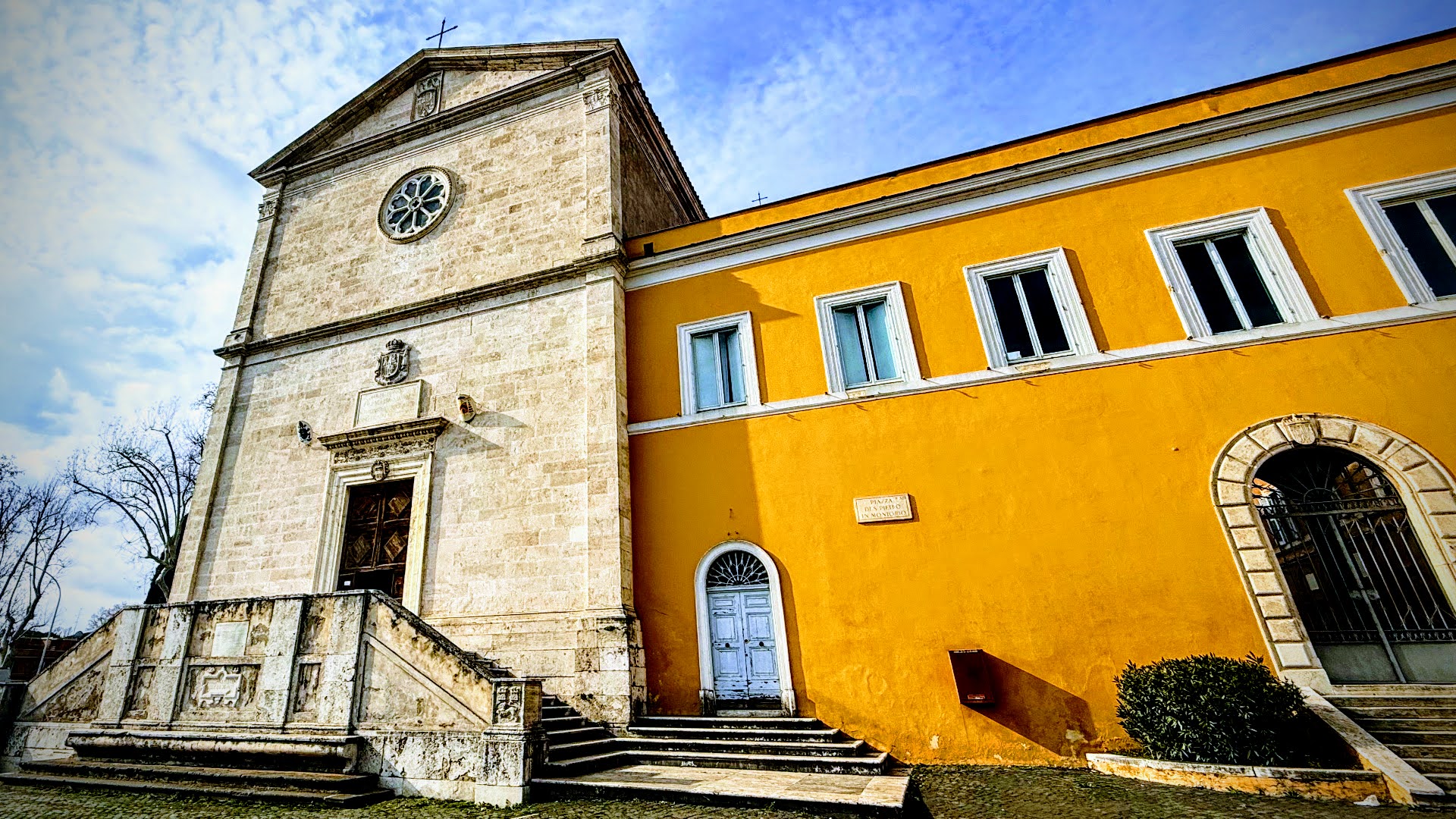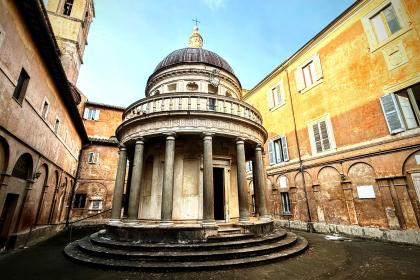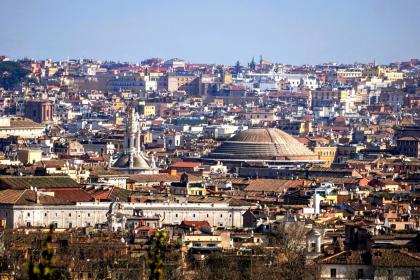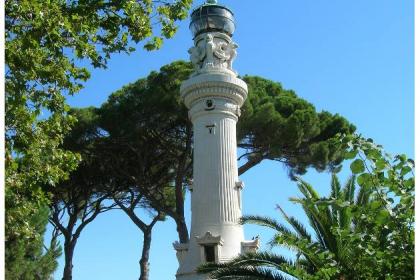
Die Kirche wurde im 9. Jahrhundert an der Stelle gegründet, an der der Heilige Petrus gekreuzigt worden sein soll. Sie wurde jedoch Ende des 15. Jahrhunderts nach Plänen möglicherweise von Baccio Pontelli umgebaut und 1500 von Alexander VI. Borgia nach einer großzügigen Finanzierung durch das spanische Königshaus geweiht. Der Name „Montorio“ leitet sich von „Mons Aureus“ ab, dem Namen, den der Janiculum-Hügel im Mittelalter aufgrund der Farbe der Erde oder des Sandes in der Gegend erhielt.
Im Jahr 1849, während der Belagerung Roms durch die französischen Truppen Napoleons III., wurde die Kirche schwer beschädigt und in ein Krankenhaus umgewandelt (von den Römern aus diesem Anlass in „San Pietro in mortorio“ d. h. Leichenhalle umbenannt). 1876 wurde das Kloster an die spanische Krone übergeben, die es zum Sitz der Königlichen Akademie machte. Die Kirche hat einen besonderen Platz in der Geschichte Irlands. Die Verbindung begann mit Flight of the Earls („Flucht der Grafen“) im Jahr 1607, als Hugh O’Neill und Rory O’Donnel nach der Eroberung Irlands durch die Tudors in Rom landeten. Die beiden Grafen wurden in einer Gruft in der Kirche beigesetzt.
Die Kirche hat eine schlichte und elegante Renaissance-Fassade mit einer zentralen gotischen Rosette und einer doppelten Treppe, die zum Eingangsportal führt, das der Schule von Andrea Bregno oder Meo del Caprina zugeschrieben wird. Das einschiffige Innere weist rechts und links fünf Seitenkapellen auf, die u. a. von Vasari, Ammannati, Daniele da Volterra und Bernini entworfen wurden. Die erste Kapelle auf der rechten Seite beherbergt zwei Werke von Sebastiano del Piombo, die um 1518 entstanden sind: die „Geißelung“, die in Öl auf eine Wand gemalt wurde, möglicherweise nach einem Entwurf von Michelangelo, und die „Verklärung“ in der Schale der Apsis. Auf dem Hochaltar der Kirche befand sich Rafaels „Verklärung Christi“, die 1797 auf Geheiß Napoleons nach Paris gebracht wurde. Nach der Restauration kehrte es 1816 nach Rom zurück, allerdings in die Vatikanischen Museen. Unter dem Altar sind offenbar die sterblichen Überreste von Beatrice Cenci begraben, die 1599 für den Mord an ihrem misshandelnden Vater hingerichtet wurde.
Im ersten Kreuzgang des Klosters kann man den Tempietto del Bramante bewundern, eines der repräsentativsten Werke der italienischen Renaissance-Architektur.
Foto: Turismo Roma
Bramante-Tempel

 Condividi
Condividi
Der Janiculum-Hügel

 Condividi
Condividi
A lighthouse in the centre of Rome

Informationen
For the timetable of the masses and visiting conditions, please consult the contacts.
 Condividi
Condividi
Location
Um mehr über alle barrierefreien Dienste zu erfahren, besuchen Sie den Abschnitt barrierefreies Rom.











































